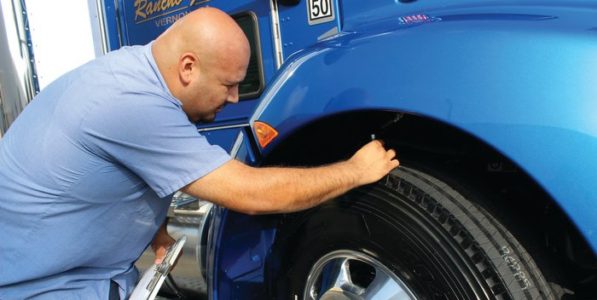
Every tire is specifically engineered to operate in a certain profile as it rolls down the road. This is predicated on having the proper amount of air in the chamber to maintain that profile. If the tire operates outside proper inflation parameters, it will never perform as it was intended, and the fleet will bear the financial impact of this.
Overinflated tires will tend to have a smaller, shorter, footprint. They will also be more susceptible to impact breaks as they can’t absorb a “shock,” as well as a properly inflated tire. Underinflated tires tend to have a larger and longer footprint and they will generate more heat because the tire “overflexes” as it travels down the road. Underinflated tires lead to:
- Increased flexing;
- Increased heat buildup;
- Faster wearing;
- Increased fuel consumption (10 PSI = 1% MPG);
- Poor feeling on the road; and
- Loss of traction in turns.
Overinflated tires are a problem as well, leading to:
- Reduced wet performance;
- Reduced shock absorption;
- Suspension wear; and
- Vulnerability to cutting and impacts.
A consistent air pressure monitoring program is one of the four key elements of an overall tire management program. The other three elements are rotation, mechanical maintenance of the vehicle and speed.
The main benefits from using a tire pressure monitoring system (TPMS) and/or automatic tire inflation system (ATIS) system is increasing the life of your tires and fuel economy. With the cost of fuel steadily increasing, fleets are looking for ways to save fuel.
As a fleet owner or manager, protecting your investment should be a vital portion of your business. It is easy to neglect tire pressures, but this can lead to a loss of net income. Not only will your MPG suffer but the life of the tire will also be shortened. Using a TPMS or ATIS system will ensure that the maximum life and performance of the tire is achieved.
ROI will vary from fleet to fleet, but on average, it will be seen in about eight to 12 months. Ideally, to be able to see the savings, fleets need to understand their operation. The ability to track the performance of your tires is critical when attempting to identify your ROI. By identifying and understanding your fleet’s cost per mile, you will have a better idea of your cost savings.
This article was contributed by Matthew Hanchana, sales,
technical service manager for Giti Tire USA.
Check out the rest of the June digital edition of Fleet Equipment here.













